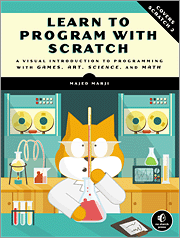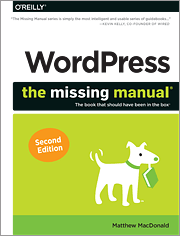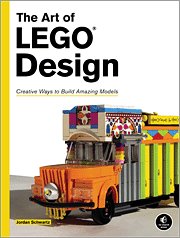I loved this book. Saller, senior manuscript editor at the University of Chicago Press and editor of The Chicago Manual of Style Online’s Q&A, has assembled a wealth of useful information and observation based on her experiences. Each chapter starts with a Q and ends with the corresponding A. The main body of the chapter is made up of musings, advice, rules and anecdotes relevant to the theme. And it’s peppered with recommendations of other texts, websites and tools that the author has found useful. It’s beautifully written, and a good humoured, gentle, easy read. Continue reading “The Subversive Copy Editor by Carol Fisher Saller”
Tag: Books
Leanpub.com
I discovered this nifty site (leanpub.com) when it transpired that someone was writing a textbook on a subject I was researching for a client. Authors can put up and sell work-in-progress and completed books (fact or fiction), and readers can get early access to in-progress texts on new or rapidly evolving topics.
The WIP aspect is interesting, as it means that an author can be funded while completing their text, allowing them to spend more time on it, rather than having to go earn a living elsewhere simultaneously. Additionaly, authors set the price, keep the rights, and earn a decent royalty (90%, minus 50c per sale). It sounds like this should also make writing for a niche audience more practical – and if the topic goes mainstream later on, then the enthusiastic author has a headstart.
Given that the time overhead of traditional publishing (writing, editing, printing, marketing, …), and the need for a sizeable audience and ROI for publishers, too many technology texts either don’t make it to market, or are almost obsolete by the time they do. This site is definitely worth keeping an eye on.
Book Review: Learn to Program with Scratch by Majed Marji; No Starch Press
 My latest selection for review from the O’Reilly Review Program is Learn to Program with Scratch by Majed Marji.
My latest selection for review from the O’Reilly Review Program is Learn to Program with Scratch by Majed Marji.
I picked this because my eldest has started to mess around with Scratch and I didn’t really know anything about it myself, so I wanted to get up to speed to be able to answer his questions.
The introduction says the book is targetted at readers from middle school and up: Wikipedia tells me that in the US this is age 11/12. It would definitely be beyond my 8yo to read this himself, and despite the kid-friendly looking cover, I found it challenging myself in places, despite being no spring chicken! 🙂
Things I liked:
- As promised on the cover, it’s visual. There are lots of illustrations to help you identify GUI elements and to get an idea of what you’re aiming to achieve through the use of certain functions and tools.
- It includes lots of short examples – “if you use these blocks, then this will happen, for example…”.
- It includes “Try it out” sections suggesting how you might tweak the current task/project to get a different result, giving scope to experiment and learn more.
- There are problems at the end of each chapter, so you can check you’ve really absorbed and undestood what was covered.
- Lots of example files are available to download, so you can save yourself some work on initial setup and get straight to the trying things out if you prefer.
Things I didn’t like:
- I found the longer examples/projects difficult to follow at times – possibly because they were mainly described in a series of paragraphs, rather than neat numbered steps or highlighted bullet points. This may be entirely down to my personal learning style, though, so your mileage may vary. It’s also possible that since I worked from the ebook edition rather than print, any formatting restraints imposed by that medium may have affected readability.
- Sometimes, you’re told which palette certain blocks come from, other times you aren’t. I guess it’s a “first mention” thing, but since a number of the palettes are similarly coloured, and my memory isn’t what it once was, I could’ve done with a bit more help in the later examples.
- I wasn’t keen on labelled images where you had to follow the trail from (1) to (2) to (3) to understand what was happening. Again, this one can probably be put down to learning style preferences.
There is useful information in there, but I think I’d’ve been happier using this book as a reference/refresher or source of ideas if I’d already learned the basics elsewhere – I didn’t find it ideal as my introduction to Scratch.
You can find out more about the book and order it direct from O’Reilly here.
Book Review: WordPress: The Missing Manual by Mathew MacDonald; O’Reilly Media
 I’ve just finished reading WordPress: The Missing Manual by Mathew MacDonald, obtained via the O’Reilly Blogger Review Program, and it’s everything I hoped it might be and more.
I’ve just finished reading WordPress: The Missing Manual by Mathew MacDonald, obtained via the O’Reilly Blogger Review Program, and it’s everything I hoped it might be and more.
I’ve had a self-hosted WordPress site for almost 4 years now: it was easy to set up, and is easy to manage as a blogging platform, but while reviewing this book I’ve begun to realise that I’m only really only scratching the surface of its capabilities.
The book kicks off with a clear explanation of what WordPress is and how it works – a key strength being the separation of content from style (theme). It looks at the pros and cons of self-hosting versus using wordpress.com, and explains the difference between different types of WordPress accounts, and the capabilities of different user roles. An appendix covers the process of migrating content from wordpress.com to a self-hosted site if you change your mind down the line.
While the focus is primarily on its strength as a blogging platform, there’s good in-depth discussion in later chapters of how to use it to present other content, such as business information, product catalogs, etc., and it’s full of links to examples of WordPress-powered sites in the wild, plus sites where you can locate WordPress-related resources such as free and paid-for plugins, page rank checking.
It covers a wide range of topics: different ways to use a WordPress site, why blog, best practices in writing effective content, search engine optimisation (SEO), how to promote your site, how to customise your site with plugins and widgets and by hacking themes, templates and styles. For comercially-minded folks, there’s discussion around how people monetize their blogs and how ecommerce can be integrated into the platform.
Where there are multiple ways of achieving the same thing, a number of the options are covered, generally with some indication of why one solution might suit your situation better than another.
There are some nifty practical tips and tricks that make a big difference too, such as clicking a little button I’d never really noticed before to maximise your editing space when composing posts online, or setting up third party edits to edit offline and publish automatically when you’re done. I discovered I’d been using categories where I should’ve been using tags, so used the tip on filtering for posts with a particular category/tag and applying bulk actions to rectify that!
All in all, I loved this book. It has something for users of all types and levels.
You can find out more about the book and order it direct from O’Reilly here.
Book Review: The Art of LEGO Design by Jordan Schwartz; no starch press
It’s been a while since I did a book review, but when I saw this one listed on the O’Reilly Blogger Review Program, I knew I had to delve deeper. We’re a house full of LEGO addicts here, and I fully expected to love this tome, but in fact, I *LOVED* it!
To quote from the book’s Introduction: “While step-by-step instructions can show you how to re-create specific models, they fail to explain how and why the original builder made certain design choices. This book reveals those thought processes.” And it does – with lots of practical information on design and building techniques, and interviews with some astonishingly talented LEGO masters.
 The book is packed with beautiful illustrations of real world builds, which provides one variety of inspiration. But it also goes to extreme geek levels with details of brick styles, lengths, heights, angles, colours, production dates, and so on. To say nothing of the copious practical examples of how building techniques (for example, building curves using series of slopes of varying angles), plus a whole section on creating mosaics using LEGO pieces (with extreme detail on measurements, ratios and geometry).
The book is packed with beautiful illustrations of real world builds, which provides one variety of inspiration. But it also goes to extreme geek levels with details of brick styles, lengths, heights, angles, colours, production dates, and so on. To say nothing of the copious practical examples of how building techniques (for example, building curves using series of slopes of varying angles), plus a whole section on creating mosaics using LEGO pieces (with extreme detail on measurements, ratios and geometry).
The sections on buildings and furniture were my favourites, but the ones on robots and spaceships will tick more boxes for other members of the family!
Aside from the wealth of information already in the book, there are plenty of references to online resources where you can find further inspiration and even source spare parts for your own creations!
You can find out more about the book and order it direct from O’Reilly here.
I can’t recommend this book highly enough. I got my review copy free, but expect I’ll be investing in a couple more for certain friends and family having seen what it has to offer.
ETA: Especially loving Luke Hutchinson’s Flickr feed, found as a result of his interview and model pics in the book.
